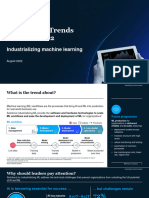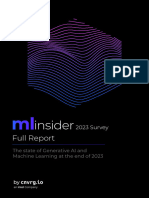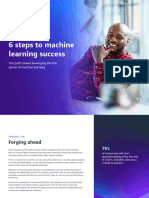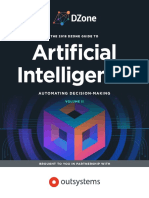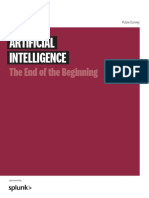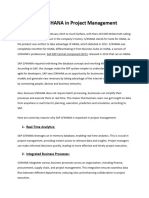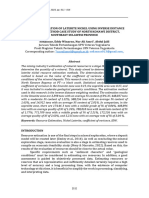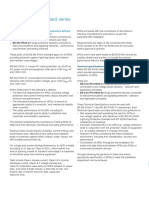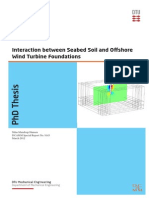0% found this document useful (0 votes)
52 views14 pagesHow To Accelerate AI With Apache Airflow
The document discusses how Apache Airflow can help enterprises accelerate their AI initiatives by better orchestrating data workflows and machine learning pipelines. It notes that while most companies recognize data as their most important asset, many still struggle to properly harness and operationalize AI. Apache Airflow emerged as a leading platform to manage complex data and machine learning pipelines at scale. It enables more effective coordination, standardization, and governance of AI projects to help organizations overcome common challenges around siloed development, lack of process coordination, overwhelming technology choices, and ensuring compliance.
Uploaded by
NEEL KANABARCopyright
© © All Rights Reserved
We take content rights seriously. If you suspect this is your content, claim it here.
Available Formats
Download as PDF, TXT or read online on Scribd
0% found this document useful (0 votes)
52 views14 pagesHow To Accelerate AI With Apache Airflow
The document discusses how Apache Airflow can help enterprises accelerate their AI initiatives by better orchestrating data workflows and machine learning pipelines. It notes that while most companies recognize data as their most important asset, many still struggle to properly harness and operationalize AI. Apache Airflow emerged as a leading platform to manage complex data and machine learning pipelines at scale. It enables more effective coordination, standardization, and governance of AI projects to help organizations overcome common challenges around siloed development, lack of process coordination, overwhelming technology choices, and ensuring compliance.
Uploaded by
NEEL KANABARCopyright
© © All Rights Reserved
We take content rights seriously. If you suspect this is your content, claim it here.
Available Formats
Download as PDF, TXT or read online on Scribd
/ 14

